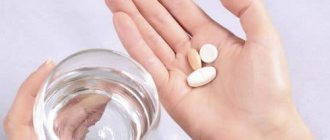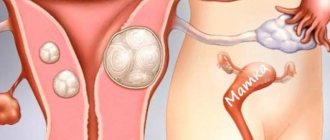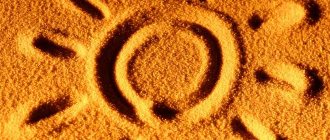29.04.2018
Myoma is one of the most common gynecological diseases, which is rapidly becoming younger in recent years. Today, myomatous nodes are found even in young women who have not yet given birth. It is not surprising that many want to know not only how to treat this disease, but also what kind of life to lead with it and whether they need to give up their old habits. So, many fans of the bathhouse are wondering whether it is possible to steam with fibroids .
Description of the disease
Fibroids are a benign tumor that grows from the muscle fibers of the uterus. There is no exact theory among doctors that explains the development of this disease. Through research, scientists have established several factors that can affect the growth of myomatous nodes:
- inflammatory processes that are localized in the pelvic area;
- sedentary lifestyle, sedentary work;
- difficult childbirth;
- caesarean section, uterine surgery, abortion;
- hereditary predisposition.
If a woman has not been pregnant before the age of 30, this may also be a factor that triggers the development of fibroids.
Medium and large tumors can cause various negative reactions in the body. Symptoms:
- internal uterine bleeding;
- release of large amounts of blood during menstruation;
- severe pain during examination by a gynecologist, sexual intercourse;
- infertility, pregnancy regression.
Due to the severe course of the pathology and the risk of developing dangerous complications, you need to be regularly examined by a doctor.
Myths about fibroids, about removing fibroids, about prohibitions on steaming and sunbathing.
The most common absurdities about a common female disease.
How to live if you are diagnosed with uterine fibroids? Will fibroids become cancer?
Remove fibroids or uterus?
Find out more about your diagnosis and stop believing horror stories.
Misconception: Uterine fibroids are precancerous, which means they will develop into cancer over time.
In fact, fibroids are the most common benign tumor of the uterus that is not associated with cancer. Cancer does not develop against the background of uterine fibroids.
A malignant tumor that develops from the muscle fibers of the uterus is very rare. Leiomyosarcoma is not a common oncological disease; it most often develops as an independent disease and is not the result of “advanced” uterine fibroids.
In general, a woman should not be afraid of the cancerous degeneration of uterine fibroids. She should also be reassured by the fact that the presence of fibroids is not an indication for complete removal of the uterus, fallopian tubes and ovaries.
The rapid growth of myomatous nodes is not an oncological “bell” either, which has been tested and proven by a large number of scientific studies. Most often, a fibromatous node begins to grow when its nutrition is disrupted. When, for some reason, the vessels do not bring blood to the node, the tissues swell and increase in size. With ultrasound, this gives us a picture of the sharp growth of the tumor.
Every woman should be alert for cancer, especially after the age of 45. But you shouldn’t perceive every tumor as a risk of cancer. Moreover, modern psychologists identify one of the reasons for the malignancy of tumors as the psychological mood of a sick person. You need to accumulate positive emotions and avoid negativity and thoughts about cancer.
Misconception: To diagnose uterine fibroids, you need to take a hormone test.
In reality, when making a diagnosis of uterine fibroids, a woman’s hormonal status plays a secondary role.
Hormone tests may be prescribed to a woman if the doctor suspects an additional disease of the reproductive system. But this analysis will not affect the choice of treatment or clarify the diagnosis in any way.
Misconception: If fibroids are diagnosed, it is necessary to perform curettage of the uterine cavity.
Curettage is a minor operation that has its own indications.
The main indications for curettage surgery or, as people say, “cleaning”:
- Woman's age. Over time, the risk of cancer of the endometrium (uterine lining) increases.
- Detection of formations inside the uterine cavity on an ultrasound examination (polyps, proliferation of the mucous membrane)
- Bleeding that leads to anemia.
- Bleeding not associated with menstruation.
In all other cases, women undergo an absolutely painless procedure - aspiration biopsy.
A biopsy is performed at the antenatal clinic, without anesthesia or pain relief.
To avoid problems in the future, trust your doctor. Especially if your relatives have been diagnosed with the following:
- Endometrial hyperplasia.
- Endometrial polyps.
- Malignant diseases of the uterus.
Misconception: Fibroids always require vigorous treatment.
Asymptomatic (without manifestations) small uterine fibroids do not require surgical or drug treatment.
Nodes in women of reproductive age can grow in size, but not always and not for everyone. They may not have constant growth, will increase to a certain size, but may never manifest themselves.
If the node does not change the lumen of the uterine cavity, if the woman does not complain of heavy menstruation or pain in the area of the node, then surgical treatment or hormonal suppression is not required.
Not all women pay attention to minor manifestations of uterine fibroids. The volume of blood lost may not be correctly assessed by a woman. Therefore, it is necessary to take a general blood test and evaluate the level of hemoglobin and red blood cells.
Women with fibroids may experience minor nagging pain in the lower abdomen. An increase in waist circumference may indicate growing knots rather than weight gain. Not all women pay attention to this. Therefore, the doctor must carefully interview and examine the patient.
Misconception: any fibroid needs to be removed, even the smallest one, for preventive purposes.
In fact, no one can predict the future fate of the nodes. The nodes can grow in size. During menopause, fibroids stop growing and can shrink significantly. During pregnancy, large amounts of the hormone progesterone are produced, which can lead to the growth of nodes, but does not always do so.
If these nodes are small in size, there is a possibility of their complete disappearance even without drug treatment.
Every person should understand the danger of any surgical intervention to life. And therefore, you need to clearly weigh the pros and cons and conduct a full diagnosis of the disease. And only if there are strict indications for surgery, take risks.
The operation to remove the uterus is quite an extensive and traumatic procedure for the body. The consequences of any operation are unpredictable.
The uterus itself, as an organ, plays a huge role. This is not only the organ in which the unborn child develops. With the help of the uterus, a woman’s normal genital area is created. There is evidence that this organ is involved in the formation of orgasms, maintains the level of metabolism and affects the functioning of the heart and blood vessels.
But medicine is a very individual science and each individual case must be considered carefully. It all depends on the location of this fibroid. If it is a small myomatous node, located deep in the uterine muscle or under the capsule, does not give a clinical picture and does not affect the woman’s quality of life, then surgical treatment is probably not required. But if a woman complains of pain and breakthrough bleeding, the patient’s quality of life decreases, or the myomatous node is located in the submucosal layer or deforms the lumen of the uterus, such a node must be removed. Especially if fibroids are not amenable to therapeutic treatment, surgical intervention is indicated.
Misconception: The main treatment for fibroids is removal of the uterus, which deprives the woman of problems in the future.
The operation should be performed according to strict indications if the condition threatens the life of the sick woman or reduces the quality of life.
Removal of the uterus is not the main method of treatment and should be considered as the last option in the list of treatments for fibroids.
It is necessary to treat your body with care and carefully study the available literature, and ask your doctor questions more often.
Even if a woman is not going to give birth, it’s good to weigh everything. After a full course of examinations, the obstetrician-gynecologist must outline all possible treatment options for this particular patient. Develop an individual approach.
Misconception: It is imperative to remove nodes.
There are other techniques for reducing knots and dealing with them. Surgical treatment is not at the forefront.
Embolization of the uterine vessels can cope with such a problem as fibroids. Embolization involves the introduction of a substance into the uterine vessels that closes and plugs their lumen. Thus, the nutrition of the nodes decreases, and growth stops, and may even lead to a decrease in tumors.
The risk of reappearance of new nodes after embolization is very small and is associated with the restoration of blood flow in the arteries, which can be solved by repeating the procedure. But all the symptoms associated with this unpleasant disease disappear immediately after the manipulation. Embolization does not require long-term narcotic anesthesia, dissection of the anterior abdominal wall and eliminates all postoperative complications (bleeding, infection).
Embolization is “not suitable” for women with fibroids who are planning a pregnancy or who have infertility associated with uterine fibroids. Such patients, if necessary, should undergo enucleation of the nodes and preserve blood flow in the organ.
Misconception: Baths and sunbathing are prohibited for women with fibroids.
Patients with uterine fibroids can afford to steam and sunbathe, go for a massage, just like healthy women. There is no direct evidence that these procedures have a detrimental effect on the development of the disease. This, of course, does not mean that patients should sunbathe uncontrollably and visit the bathhouse.
But it is necessary to have a sense of proportion in everything and find a “golden mean”. We must remember that prolonged exposure to ultraviolet radiation has a carcinogenic effect for any organism.
However, illness is not a reason to change your habits. In a moderate dose, everything will only benefit you and bring physical and mental satisfaction.
Misconception: Pregnancy is impossible with fibroids.
With proper planning and management of pregnancy, in some cases, removal of nodes is not a priority. Complications of pregnancy often include early or premature rupture of amniotic fluid, placental abruption, and bleeding in the postpartum period. Delivery of women with fibroids is possible through the natural birth canal, but this depends on the location and size of the fibroids.
There are complications of pregnancy with fibroids, but they are predictable and can be avoided.
Misconception: Ultrasound is the most accurate method. The size of fibromatous nodes can be determined with an accuracy of a millimeter.
In fact, the myomatous node has an irregular shape and its size may change depending on the projection. The most accurate method for measuring fibroids is magnetic resonance imaging (MRI).
In addition, during ultrasound examination, measurement errors are possible. Therefore, the doctor may not draw his or your attention to the difference in size of 1-2 mm with the previous ultrasound.
If it is not possible to do an MRI, it is necessary to take several measurements of the nodes in different “slices” and, if possible, save photographs of the uterus with fibroids.
To assess the growth of uterine fibroids, it is necessary to repeat an ultrasound or MRI after six months. Only in this case can we talk about the growth or reduction of the node.
Misconception: Duphaston is a hormonal drug with which you need to start treating uterine fibroids.
This method of treatment has long been forgotten and gone into history. Duphaston is a progesterone drug. Progesterone, in turn, is produced during pregnancy and stimulates the growth of all tissues, which creates favorable conditions for the development of a small organism and the growth of its cells.
Taking duphaston can have the effect of fibroid growth.
Thus, duphaston can grow fibromatous nodes and is not used in modern gynecology for the treatment of fibroids.
Conclusion:
For a correct and adequate attitude towards your health, you need to read scientific literature, discuss all the questions and problems that interest you with your doctor. If you are not satisfied with the doctor's answer, you can seek advice from a specialist you trust.
You need to take care of your health and body.
What thermal procedures can be dangerous?
There are several thermal procedures that are prohibited when myomatous nodes grow:
- bath procedures, visiting saunas;
- taking a hot shower, bath;
- using a heating pad placed on the lower abdomen (for example, for cystitis);
- work involving a long stay in a hot shop.
The effect of heat on fibroids triggers metabolic processes and blood circulation. Because of this, the cells receive additional nutrition and begin to actively divide, which leads to the growth of a benign formation.
Is it possible to take a steam bath if you have fibroids?
It is currently believed that one of the provoking factors for the appearance of a tumor is hyperestrogenism or excess estrogen. Warming up, insolation, and abundant thermal radiation stimulate the production of estrogen, therefore, for fibroids, saunas, hot baths and steam baths are contraindicated procedures.
Doctors believe that fibroids in a bathhouse, when visiting a sauna or under the influence of hot baths have a favorable nutrient environment for growth and development due to improved blood circulation, but the most dangerous are hot wraps on the abdominal area, because they have a targeted thermal effect on the abdomen, which lead to increased blood circulation in the uterine area. Thanks to active blood circulation in the uterus, myomatous nodes will be intensively supplied with all nutrients. All this will have a positive effect on the growth of nodes.
Bath lovers ask the following question: why is it undesirable to take a steam bath with uterine fibroids if the blood flow does not go to the internal organs, but mainly to the skin, so the condition of the skin in the bath improves significantly? But this is not so, heat causes certain changes in the skin, but it also has an effect on the entire body, including the female organs. In addition, if a woman suffered from intermenstrual bleeding, then going to the bathhouse can provoke and intensify uterine bleeding. By the way, during pregnancy, a bath is prohibited, because... may cause miscarriage. If uterine fibroids and sauna are incompatible, what physiotherapy procedures are recommended for fibroids?
Answer: Radon, iodine-bromine baths, laser radiation, low frequency magnetic radiation.
If the size of the fibroid is insignificant and there are no symptoms, the doctor only suggests monitoring its condition; is it really necessary to refrain from taking a bath in this case?
Answer: you must do everything to prevent the tumor from growing, but on the contrary, its involution (disappearance) occurs, so it is best to take care of yourself and listen to the doctor. If the benefits of a bath are more significant than the potential harm, then you can take the risk, but you should not abuse it.
Is it possible to use an infrared sauna if you have a tumor?
Infrared saunas are becoming more popular every year. Many women are confident that their visit does not pose a risk to the general condition of fibroids.
Infrared radiation affects the body for a certain period of time. It penetrates deeper than the usual heat from steam and evenly warms the body. The air around is not warming up. Due to deeper heating, the tumor heats up more than when visiting a regular bath. This provokes its active growth, which can lead to serious complications.
Visiting the infrared sauna
How not to “go too far”?
The desire of a woman with such a diagnosis to protect herself from situations that can stimulate the development of myomatous nodes is quite understandable. And against this background, an excellent solution would be to quit smoking or start eating right. At the same time, it is important not to “go too far” and not create conditions for yourself that will lead to much greater stress for your body.
The first thing that comes under close attention is fibroids and a sauna, fibroids and a sauna, as well as just hot baths. Agree: for those who like to relax in the bath or go to the steam rooms once a week, this is a real tragedy. It is worth noting right away that doctors are still arguing about whether there is a relationship between the development of uterine fibroids and visiting the bathhouse, since no research has been conducted in this area. There is no reliable data on the effect of a traditional bath, hot bath or infrared sauna on its development for uterine fibroids, so each doctor gives recommendations to his patients based on his experience of observing them.
Thus, some gynecologists categorically prohibit visiting steam rooms and taking hot baths, arguing that heating tissue stimulates uterine circulation, and therefore can provoke intensive development of neoplasms and bleeding.
The attitude of other gynecologists towards taking hot baths and visiting baths and saunas is more loyal, since they rely on the absence of arguments about their negative impact on the development of the disease. When taking a bath or staying in a steam room, the skin is mainly heated, not the internal organs, so high temperatures do not affect the course of the disease. At the same time, this does not mean that if you have myomatous nodes, you should sit in hot water for a long time or steam several times a week. Measure is important in everything, and this case is no exception.
When is going to the steam room allowed?
The presence of fibroids is not a complete ban on visiting the sauna or bathhouse. In some cases, visiting the steam room is allowed:
- no sign of anemia, blood discharge after and before the menstrual cycle.
- the diameter of the benign neoplasm does not exceed 2 cm, there are no pronounced symptoms;
- The woman takes hormonal drugs and the growth of myomatous nodes has stopped.
If after consultation the gynecologist allows you to visit the bathhouse, it is strictly forbidden to do medicinal wraps. Additionally, vacuum massage, the use of scrubs, and anti-cellulite massage are prohibited.
Reviews
I go to the sauna with uterine fibroids, although the doctor told me that the sauna is an unfavorable external factor, but I can’t live without sports and without a bath, the fibroids don’t grow and nothing happens to it.
I have multiple nodules, but at the same time I have a Mirena spiral, I allow everything - saunas, steam baths, and the sea, though all without fanaticism, however, I do not deny myself anything, today 40% of fibroids have fibroids, so what should we do? not to live or something..
It all depends on the size and growth of the formation, if it is large and bleeding, then I would not risk it.
When should you stop going to the steam room?
Doctors identify several absolute contraindications for bathing procedures for women with fibroids:
- active emergence of new benign neoplasms;
- fibroid growth;
- the presence of bleeding before and after menstruation;
- Iron-deficiency anemia;
- pressure surges, increased body temperature;
- malaise, weakness, drowsiness.
It is strictly forbidden to go to the bathhouse during the menstrual cycle, 3-4 days before and after it.
Myoma and sports, bathhouse, etc.
who actually encountered it. or the gynecologist yourself, help. small nodules appeared even before pregnancy (from stimulation), one was removed during hysteroscopy before pregnancy, after childbirth 2 nodules remained - small but nasty, but I feel no movement and no weight loss. that my nerves were on edge and I decided to take myself more seriously. the hanging belly is already infuriating, I have a small uterine fibroid, questions for those in the know (assumptions are not needed - I read them on the Internet until my eyes hurt): 1) is it possible to go to the bathhouse? after all, the body will heat up 2) is it possible to massage the abdomen? 3) wraps - I don’t do the wraps myself for long, but what if?? 4) run (I would like to take up running) 5) an exercise bike - all these questions - will it provoke the growth of this nasty thing. THANK YOU, I'm waiting for your comments
Woman.ru experts
Find out the opinion of an expert on your topic
Svetlana Kazakova
Psychologist. Specialist from the site b17.ru
Kuzmin Ivan Ivanovich
Psychotherapist, Supervisor. Specialist from the site b17.ru
Antakova Lyubov Nikolaevna
Psychologist, Consultant. Specialist from the site b17.ru
Olga Matvienko
Psychologist, Art therapist. Specialist from the site b17.ru
Baranova Yulia Germanovna
Psychologist, Consultant. Specialist from the site b17.ru
Tropina Natalya Vladimirovna
Psychotherapist. Specialist from the site b17.ru
Victoria Kiseleva
Psychologist, Gestalt therapist. Specialist from the site b17.ru
Sokurenko Anna
Psychologist, Consultant. Specialist from the site b17.ru
Spiridonova Nadezhda Viktorovna
Psychologist. Specialist from the site b17.ru
Zubkova Anna Andreevna
Psychologist, Gestalt therapist. Specialist from the site b17.ru
You should not go to the bathhouse with endometriosis. But sports are even useful for you, BUT not for strength training, but for Pilates, yoga and by the way, BELLY DANCE (it is generally useful) even promotes the resorption of fibroids.
cleanse yourself of parasites and your nodules will go away.
I have multiple myomatous nodes. I go to sports regularly, run a lot, cycle, body bump - all this is possible. bathhouse, sauna, hammam - absolutely not allowed, including solarium. the nodes begin to grow, I tested it myself. I do massage, but NOT the abdomen. only the thighs, buttocks, in the summer I did lymphatic drainage of the whole body, with the exception of the abdominal area. the nodes did not grow. Any hot wraps on the abdominal area are also prohibited. go for aerobic exercise, adjust your diet, pump up your abs and your belly will go away
Rules for visiting the steam room
Rules for visiting the steam room:
- It is forbidden to visit the sauna, steam bath, swimming pools during the menstrual cycle;
- It is better to refuse these procedures if there is bleeding or pain in the lower abdomen;
- It is forbidden to stay in the steam room for more than 3 minutes;
- you should avoid visiting the sauna or bathhouse if the myomatous nodes are too large;
- Before performing bath procedures, you need to consult with your doctor and undergo an examination.
Additionally, you should refrain from physical activity: cycling, weight lifting, abdominal exercises.
When should you not go to the sauna without a doctor’s recommendation?
There are several situations in which you should consult a doctor before visiting a bath:
- the presence of blood discharge before or after menstruation;
- discomfort, pain in the lower abdomen;
- active growth of myomatous nodes.
If such symptoms occur, you should immediately contact a gynecologist so that the doctor can conduct an examination.
There are a number of situations in which it is still better to take care of your health - and before deciding to visit the bathhouse, consult with your doctor. This is what you should do if:
- the disease is accompanied by intense menstrual bleeding;
- the patient has bleeding between periods;
- There is an active growth of myomatous nodes.
Possible consequences
If a woman neglects the rules and continues to visit the sauna, bathhouse, this can lead to the development of various complications:
- sudden growth of fibroids;
- development of uterine bleeding;
- severe pain in the lower abdomen;
- deterioration of general condition (increase in temperature, pressure).
The number of myomatous nodes can quickly increase, which will negatively affect the patient’s well-being.
Many women over 30 experience fibroids. Benign formation imposes certain restrictions on the usual lifestyle of patients. Therefore, when visiting a bathhouse, you need to take into account a number of rules.
About the peculiarities of fibroid formation
A tumor that develops in the uterus and is benign in nature is called fibroid. Myomatous nodes vary in their location. They can occur in the muscle layer of the uterine wall - these are intramural or interstitial fibroids. The node can grow towards the peritoneum and become covered with the serous covering of the peritoneum - this is a subserous node. If the tumor grows into the uterine cavity and becomes covered with the uterine mucosa, then it is a submucous fibroid.
In some cases, a node is detected completely by accident during a gynecological examination - this is called asymptomatic, but the tumor can also be characterized by the following symptoms: heavy menstrual flow, acyclic bleeding, pain in the lower abdomen, lower back, constipation, frequent urination, weakness, anemia, infertility, etc. .d.
The causes of the disease have not been fully identified, but women are considered at risk:
- With hormonal imbalance.
- There is a history of operations that traumatize the uterus: abortion, hysteroscopy, and others.
- Close relatives had fibroids.
- Frequent infectious diseases of the female genital organs.
What should the diet be like?
Poor nutrition and obesity lead to changes in the body's hormonal levels. The accumulation of subcutaneous fat provokes the conversion of androgens into estrogens. According to research results, every 10 extra pounds of weight increases the risk of developing tumors in the uterus by 20%.
On the contrary, healthy food improves metabolism in the body, normalizes weight and metabolism, strengthens the immune system, which has a positive effect on both general well-being and the process of treating uterine fibroids. The diet is compiled taking into account energy costs and must be varied, balanced, and contain all the necessary microelements. The products are subjected to gentle heat treatment.
Fatty, salty, hot, spicy, smoked and fried foods are excluded from the menu. The use of preservatives, semi-finished products, and dyes is unacceptable. Alcoholic drinks are prohibited.
To prevent a tumor from degenerating into a malignant one, you need to consume foods rich in vitamin E and antioxidants (nuts, soybeans, dried apricots, vegetable oils, legumes, rose hips, green tea).
The list of products allowed for uterine fibroids includes the following:
- dairy products – kefir, cottage cheese, sour cream, fermented baked milk with a low fat content;
- cereals – buckwheat, rice, wheat;
- meat – chicken, rabbit, turkey;
- seafood - lean fish, mussels, seaweed, squid;
- vegetables, greens - lentils, lettuce, zucchini, tomatoes, cauliflower, cucumbers, beets, pumpkin;
- berries, fruits - pomegranate, peach, currant, gooseberry, mango, avocado, apples, grapes, kiwi, pear, nectarine, lemon, grapefruit, orange.
You can eat dried fruits, but it is better to avoid confectionery products. Those with a sweet tooth are allowed to eat honey, biscuits and oatmeal cookies, and jams. Preference is given to fresh vegetables, fruits, and berries, but even when frozen they do not lose their usefulness.
Compliance with simple rules and recommendations of the attending physician will improve the general condition of the body and help in the fight against myomatous formation. A healthy lifestyle, proper nutrition, moderate exercise, and walks in the fresh air will be an additional step on the path to recovery.











